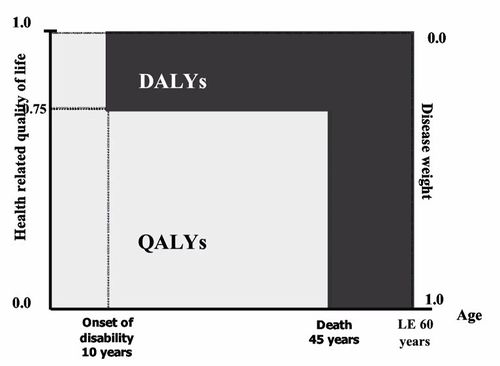「Non-Communicable Diseases」の版間の差分
ナビゲーションに移動
検索に移動
Vaccipedia.admin (トーク | 投稿記録) |
Vaccipedia.admin (トーク | 投稿記録) |
||
| 109行目: | 109行目: | ||
*only 26% of LMICs have pathology service available | *only 26% of LMICs have pathology service available | ||
*only 20% of LMICs have cancer data | *only 20% of LMICs have cancer data | ||
| + | |||
| + | *1/3 of death by cancer are potentially preventable | ||
| + | **obesity reduction | ||
| + | **smoking cessation | ||
| + | **alcohol reduction | ||
| + | **infection control for HPV, HepB, HepC, ''H. pyroli'' | ||
| + | **occupational exposures to environmental carcinogenic agents | ||
| + | |||
| + | ===HPV=== | ||
| + | *90% of HPV infection spontaneously regress within 24 months | ||
| + | *risk factors of infection | ||
| + | **early sexual activity | ||
| + | **young age at first birth | ||
| + | **multiple pregnancies | ||
| + | **multiple | ||
| + | *risk factors of cervical cancers | ||
| + | **HPV type | ||
| + | **immune status | ||
| + | **coinfections with other STIs including HIV | ||
| + | **multiparity and young age at first birth | ||
| + | **tobacco | ||
| + | **OC > 5 years, but it is confounding with sexual activity | ||
2021年5月19日 (水) 11:53時点における版
目次
definition
- IDs vertical program ⇔ NCDs horizontal program
- some IDs in tropics have NCD-like characterics
- HIV
- lymphatic filariasis
- Chagas disease
epidemiology
- 41 mil. deaths per year worldwide
- 71% of all deaths
- 15 mil. deaths by NCDs occur between 30 and 69 y/o ... "premature" death
NCDs in LMICs
- tobacco
- food pricing and availability
- food preferences
- physical activity
- technologies
- social movement
- limited research of NCDs in LMICs
measuring burdens of NCDs
WHO Package of Essential NCDs intervention (PEN)
diabetes and insulin treatment in LMIC
- Insulin Zeer
- cool wallet (ex. Frio)
- DOT (directly observed treatment) like in a refugee camp
- Malnutrition-modulated diabetes mellitus (MMDM)
- Protein-deficient DM in West Africa
- Fibrocalculus pancreatic DM
- onset 10-30 y/o
- rural origin, poor economic status
- history of inadequate nutrition since in mother's uterus
- more severe DM
- tropical diabetic hand syndrome
- usually after minor trauma
- seems not due to peripheral angiopathy/neuropathy
- localised cellulitis confined to hands, often progressive to amputation
stroke
- 2/3 of worldwide stroke occur in developing countries
- 40% occur in <70y/o
- ethnic differences
- caucasian
- 80% ischemic stroke
- South Asian
- 20-30% hemorrhagic stroke
- Africa
- 26-33% cerebral hemorrhage
- Head CT
- ≈100% in HICs
- 90% in LMICs, but confined to a certain size of hospitals to which many residents have difficulty in access
- antiplatelet
- 92% in HICs
- 78% in LMICs
- rtPA
- 30% in HICs
- 3% in LMICs
NCDs among children and adolescent
- WHO definition for NCD deaths exclude that in < 30 y/o
- insufficient data
- rheumatic heart disease
- 15.6 mil. per year
- Sickle cell anemia
- 70% of world cases in Sub-Sahara
- pediatric and adolescent malignancy
- cure rate 80% in HICs, 20% in LMICs
- bronchial asthma
- high risk factor is solid fuel burned inside house
- suicide
- third leading deaths in 15-19 y/o
- risk
- sexual violence
- bullying
- discrimination
- in conflict or disaster zone
- injuries and violence
- intentional
- self
- by others
- unintentional 90%
- 1st deaths in 10-19 y/o
- road traffic accidents 93% in LMIs
- drowning
- burns, death rate in LMIC 11 times higher than in HIC
- fall
- poisoning
- intentional
cancer and palliative care
- cancer 2nd deaths worldwide
- 9.6 mil. deaths in 2018
- 1 in 6 deaths
- incidence in both sexes
- 1 lung, 2 breast, 3 colon, 4 prostate
- mortality in both sexes
- 1 lung, 2 colon, 3 stomach, 4 liver
- only 26% of LMICs have pathology service available
- only 20% of LMICs have cancer data
- 1/3 of death by cancer are potentially preventable
- obesity reduction
- smoking cessation
- alcohol reduction
- infection control for HPV, HepB, HepC, H. pyroli
- occupational exposures to environmental carcinogenic agents
HPV
- 90% of HPV infection spontaneously regress within 24 months
- risk factors of infection
- early sexual activity
- young age at first birth
- multiple pregnancies
- multiple
- risk factors of cervical cancers
- HPV type
- immune status
- coinfections with other STIs including HIV
- multiparity and young age at first birth
- tobacco
- OC > 5 years, but it is confounding with sexual activity
